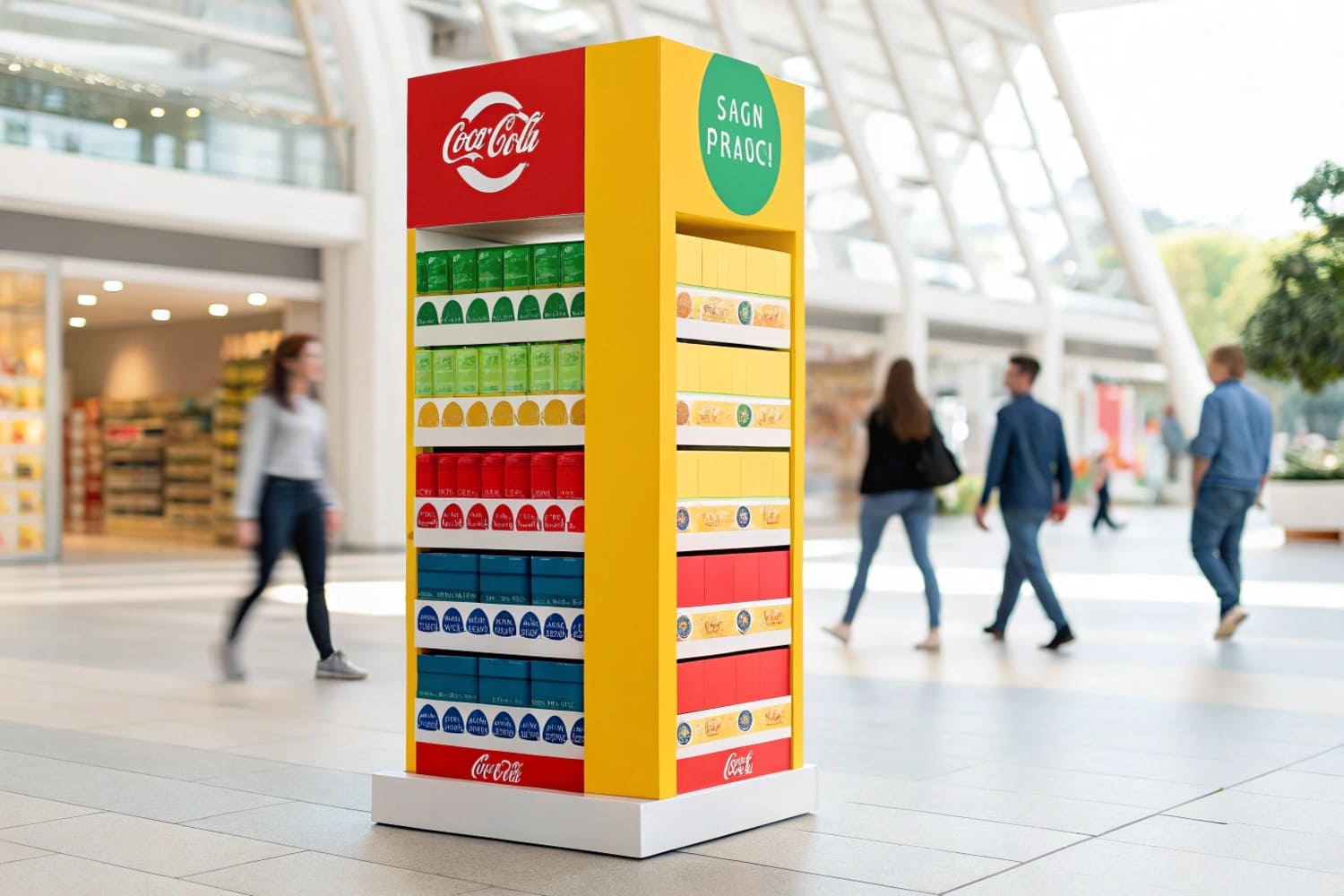Retail aisles overflow with noise. Shoppers pass by in seconds. If my display cannot capture them, sales vanish. I needed a clear plan to pick the right POP stand.
Choose a POP display that fits product size, matches shopper journey, supports weight, reflects brand colors, and stays within budget while offering quick assembly and eco-friendly materials. This practical checklist guides any business toward the best point-of-purchase solution.

A smart display choice turns passing traffic into paying customers, so keep reading as I break down the key questions that shape every purchase decision.
What is the primary purpose of point of purchase pop displays in retail environment?
Retail floors fight for attention. Products on a flat shelf blend in, and my marketing spend leaks away. A purposeful display must halt that drift and pull shoppers closer.
The main goal of a POP display is to capture shopper attention right at the buying moment, highlight product benefits, and trigger an immediate purchase without needing extra staff.
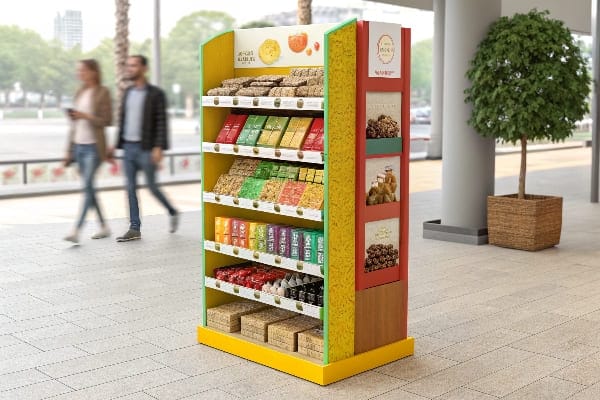
Why “Stop, Hold, Sell” Matters
Shoppers move fast. A cardboard stand with bright graphics interrupts their path, holds their gaze for three critical seconds, and sells the story in one clear headline. I learned this while testing bow-hunting kits: the unit with a bold deer graphic1 outsold plain cartons by 42 % in two weeks.
Elements That Drive Purpose
| Element | Role in Purpose | Quick Check |
|---|---|---|
| Height | Enters eye line | 1.2 m–1.5 m hits most adults |
| Color | Signals brand | Match Pantone codes precisely |
| Structural strength | Holds stock safely | Double-wall E-flute passes shake test |
Tracking Success
I staple a small QR code2 on each display. When scanned, it logs engagement. Sales data then show if the unit truly changes shopper behavior. Purpose is never abstract; it lives or dies by the cash register.
What are the pros and cons of pop displays?
My marketing budget is not endless. A display must earn its floor space, yet every format has trade-offs.
POP displays boost brand visibility and impulse sales at low cost, but they need design time, store approval, and can suffer wear if materials or printing are poor.
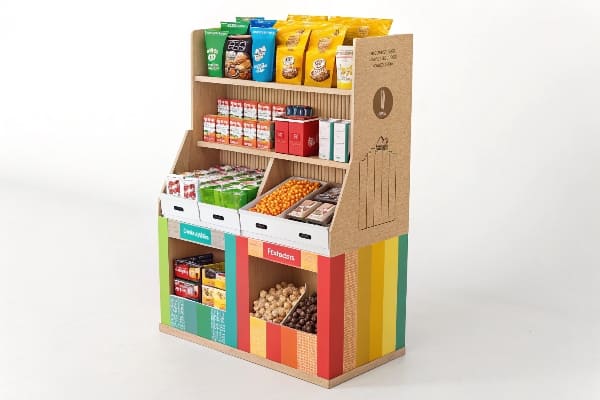
Breaking Down Benefits and Drawbacks
Benefits I Rely On
Speed to Market3\
Cardboard racks ship flat and set up in under five minutes. When Barnett Outdoors launches a new crossbow, we can hit seasonal peaks without missing opening day.Targeted Messaging\
Each unit carries a single call-to-action. Shoppers see “Try the new mechanical broadhead today” and know exactly what to do.Data Friendly\
NFC tags hidden in the header let me see how many people hover.
Drawbacks to Manage
Durability4\
Moisture on a hunting-goods aisle ruins uncoated board. I now spec water-based varnish as standard.Store Compliance\
Some chains limit footprint to 0.5 m². Oversized kiosks stay in the back room, earning zero.End-of-Life Waste\
Retailers prefer recyclable materials. I provide simple take-back sheets to encourage proper disposal.
Quick Reference Table
| Factor | Pro | Con |
|---|---|---|
| Cost | Low tooling | Short life span |
| Flexibility | Fully custom | Weak against heavy items |
| Sustainability5 | 100 % recyclable | Ink coverage affects recyclability |
When I weigh these points, I can choose wisely and set realistic expectations.
Why do merchandisers use pop displays?
Stock on a plain shelf tells no story. A merchandiser’s job is to make products jump into hands faster than the next brand over.
Merchandisers deploy POP displays to organize inventory, present clear value, drive impulse buys, and simplify restocking while supporting brand campaigns.
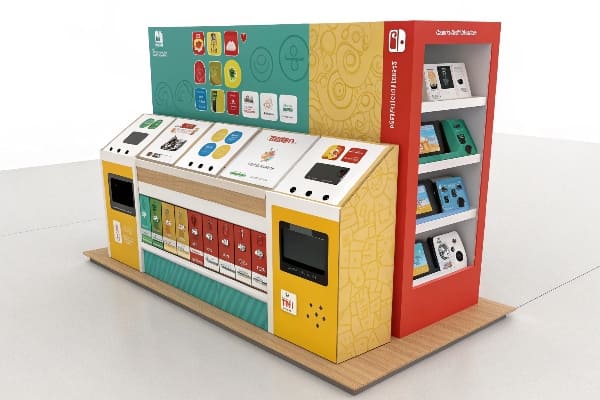
Goals Behind the Choice
Sales Velocity6
POP towers keep hot items at arm’s length. During Black Friday I placed arrow cases on end-caps; sell-through doubled versus inline shelving.
Inventory Control7
A die-cut tray holds exactly 24 boxes. Staff see low stock at a glance. Reorder triggers sooner, preventing empty hooks.
Execution Checklist for Merchandisers
| Task | Tool | Result |
|---|---|---|
| Planogram design8 | 3D rendering | Accurate spacing |
| Load test | 10 kg sand bag | Confirms stability |
| Signage swap | Magnetic header | Fast seasonal update |
My Personal Routine
I visit each store fortnightly, snap photos, and adjust bent shelves. This hands-on loop turns displays from static props into living sales machines.
What does pop stand for with regards to retail businesses?
Industry jargon can confuse new buyers. I once spent a call explaining acronyms before we even discussed price.
In retail, POP stands for “Point of Purchase,” the exact place where a consumer decides to buy and completes the transaction.

Where the Term Fits
Store Zones
The checkout lane9 is the final POP, yet any floor spot where a shopper grabs product counts. Understanding zones guides my display placement.
Marketing Funnel Link
POP aligns with the “Action” stage. Advertising builds awareness, but the stand seals the deal when hands meet product.
Common Misunderstandings
| Misused Term | Real Meaning | Clarification |
|---|---|---|
| POS | Point of Sale | Focus on payment system |
| POP | Point of Purchase10 | Focus on decision moment |
Being clear avoids errors when drafting vendor agreements or printing labels.
Who usually provides pop displays?
Buying teams often ask who foots the bill. The answer shapes margin discussions.
POP displays are typically supplied by the product manufacturer or its contracted display vendor, sometimes co-funded with retailers through promotional allowances.
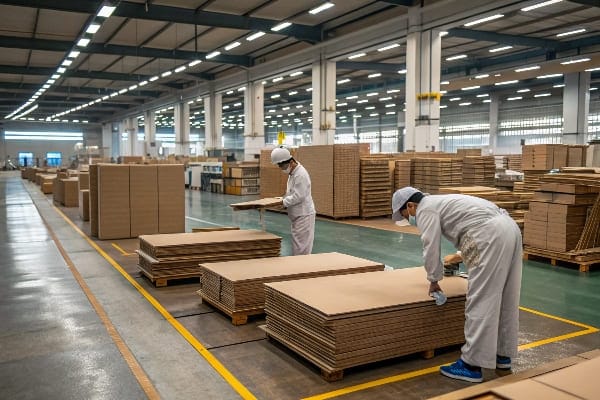
Supply Chain Options
Manufacturer-Funded
As Popdisplay in China, I design, print, and ship units alongside the product. This keeps branding consistent and secures quantity discounts.
Retailer-Driven
Big box chains may order neutral displays to house multiple brands. They charge slotting fees11, shifting cost to vendors indirectly.
Budget Split Models
| Model | Who Pays | Benefit | Risk |
|---|---|---|---|
| Full manufacturer | Supplier | Brand control | Higher upfront cost |
| Co-op fund | 50/50 | Shared risk | Approval delays |
| Retailer lease | Retailer | Uniform look | Limited creativity |
I favor manufacturer control12, because speed matters more to me than splitting pennies.
Which is an example of a pop point of purchase display?
Examples clarify theory. Buyers need visuals to picture results.
A freestanding cardboard floor stand with branded graphics holding packaged snacks near a checkout lane is a classic example of a point-of-purchase display.
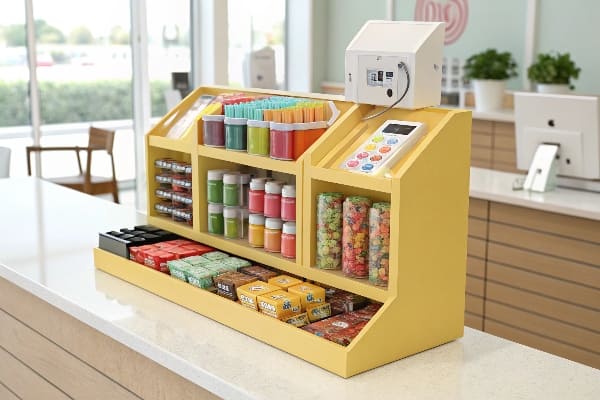
Varieties I Place Most Often
Floor Stands
They own their footprint and can carry heavier goods like crossbow kits13 up to 15 kg using reinforced B-flute.
Counter Units
Small, lightweight, perfect for impulse buys14 such as wax lube tubes. I limit height to 20 cm so they never block sightlines.
Power Wings
Clip onto aisle gondolas without extra floor space. A hunting accessory wing lifted broadhead sales15 by 37 % last spring.
Selection Guide
| Display Type | Ideal Product Weight | Assembly Time |
|---|---|---|
| Floor stand | Up to 15 kg | 5 min |
| Counter unit | Under 2 kg | 1 min |
| Power wing | Up to 5 kg | 3 min |
Seeing real-world cases helps stakeholders agree quickly and sign off on production.
Conclusion
Choose displays that stop shoppers, fit products, and match budgets; then track results and refine for the next launch.
Discover how impactful visuals like a bold deer graphic can significantly boost sales and shopper engagement. ↩
Learn how QR codes can effectively track engagement and influence sales, providing valuable insights for retailers. ↩
Understanding speed to market can help you optimize your product launch strategy and gain a competitive edge. ↩
Exploring durability solutions can enhance your product’s lifespan and performance in retail environments. ↩
Learning about sustainable packaging can help you meet consumer demands and improve your brand’s image. ↩
Understanding Sales Velocity can help you optimize your retail strategies and boost sales effectively. ↩
Exploring Inventory Control can provide insights into efficient stock management and enhance your business operations. ↩
Learning about Planogram design can help you create effective product displays that maximize sales and customer engagement. ↩
The checkout lane plays a vital role in retail, influencing last-minute purchase decisions and customer satisfaction. ↩
Understanding the Point of Purchase is crucial for effective marketing strategies and enhancing customer experience. ↩
Exploring slotting fees will help you grasp their impact on product placement and vendor costs in retail environments. ↩
Understanding manufacturer control can enhance your supply chain strategy, ensuring brand consistency and efficiency. ↩
Explore this link to discover top-rated crossbow kits that can enhance your hunting experience and meet your needs. ↩
Learn strategies to boost impulse buys in your store, maximizing sales and customer engagement. ↩
Find out which broadheads are most recommended for hunting, ensuring you make informed choices for your gear. ↩

